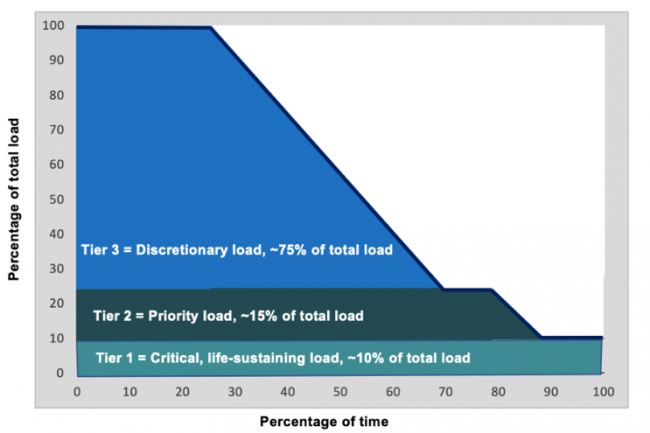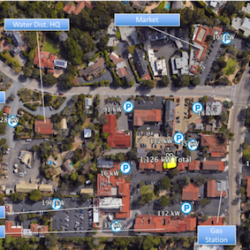In partnership with the Clean Coalition, the World Business Academy has engaged the Montecito community towards the development of a Community Microgrid, starting with independent microgrids at three critical community facilities:
- Montecito Fire Protection District (FD) headquarters and primary fire station, which maintains and deploys the majority of Montecito’s fire-fighting resources.
- Montecito Water District (WD) headquarters and critical wells and pumps, located adjacent to the FD and which must operate 24/7 during wildfires and power outages.
- Montecito Union School (MUS): Half a mile from the FD/WD; already the site of the FD’s emergency helicopter operations; will serve as the primary emergency sheltering site.
A Community Microgrid is a locally based energy system: an on-site electric grid combining solar panels and other locally available renewable resources with advanced inverters, energy storage, and software-based control systems. Although a Community Microgrid is linked to the main electric grid, it can operate independently, providing power to critical facilities and other prioritized loads during a power outage or and utility-initiated Public Safety Power Shutdown (PSPS).
These facilities will provide indefinite renewables-driven backup power for the most critical electric loads (~10% of total load) during outage and PSPS conditions. Furthermore, these facilities will pay no more for electricity than they would to the utility and will cover more than the most critical loads during non-outage conditions. As shown in the graph below, the energy generated and stored by the microgrids during outage conditions will cover site load (load=energy consumed), ranging between 10% of site load 100% of the time to 100% of site load ~25% of the time.
The Montecito Fire District (FD) Microgrid design is almost finalized, and designs are progressing for the Water District (WD) and MUS Microgrids, which are scheduled to follow the FD Microgrid by a few months.
Because of the groundbreaking nature of the microgrid designs, these three initial projects require a $750,000 subsidy (relatively small when compared to the lifetime benefits) which will be covered by the Montecito Community Microgrid Resilience Fund. Because each subsequent Microgrid deployment within the Montecito community will enjoy higher efficiency at a lower cost, these three initial projects will provide leverage to increasingly eliminate the need for subsidies for future sites. Additionally, the Clean Coalition is diligently standardizing a Value of Resilience (VOR), which will help everyone understand that a premium is appropriate for indefinite renewables-driven backup power for critical loads.
While the three critical community microgrid facilities currently must operate independently, we hope to eventually upgrade the local power grid to allow for sharing of local renewable resources between these and other adjacent properties. The more locally generated power that is available to the microgrids, the longer and more effectively they can operate during power outages and other emergency conditions.
As a result of extreme weather events from accelerating climate change impacts, California is approaching an inflection point towards the restructuring of its energy system with distributed energy resources (DERs) to provide higher resiliency to exposed communities such as those in Santa Barbara County. The Montecito Community Microgrid Initiative (MCMI) provides a unique opportunity to rebuild with resilience following 2018’s devastating fire and debris flow in this disaster-prone region — while ensuring indefinite renewables-driven backup power for critical emergency response and recovery facilities. This groundbreaking deployment of clean local energy will showcase the grid of the future and will provide an unparalleled trifecta of economic, environmental, and resilience benefits to the community. Successful deployment and expansion of community microgrids in Montecito will also serve as a replicable model for other Santa Barbara communities.
A renewable microgrid harnesses, stores and distributes energy from local renewable resources, increasing a community’s energy reliability and resilience while also providing critical support services in the event of a power outage from grid failure or a natural disaster. When completed, the MCMI will ensure that vital services remain running during emergencies and serve as a replicable model for other communities looking to transition California to a clean energy future. Help the Clean Coalition and World Business Academy complete this project! Your contribution will help bring much-needed resilience to the Montecito community and eventually our entire region.

